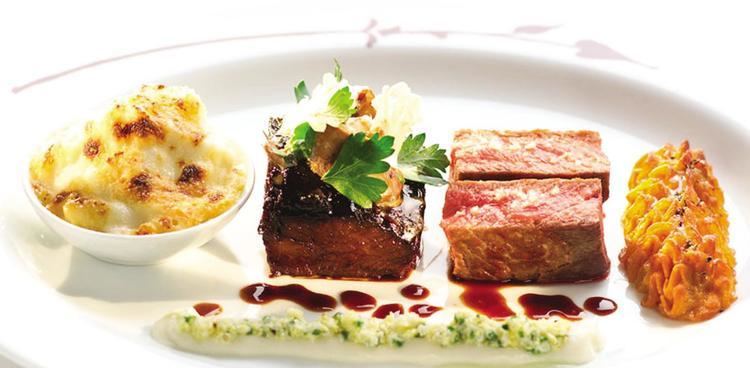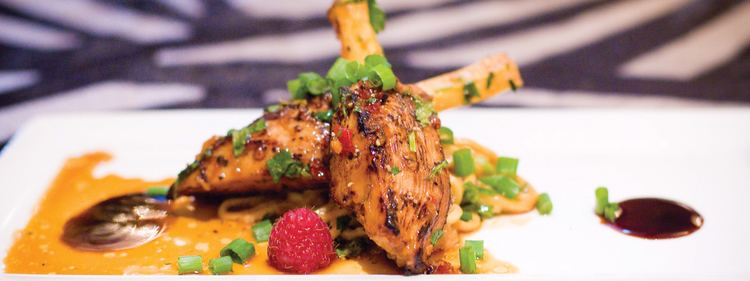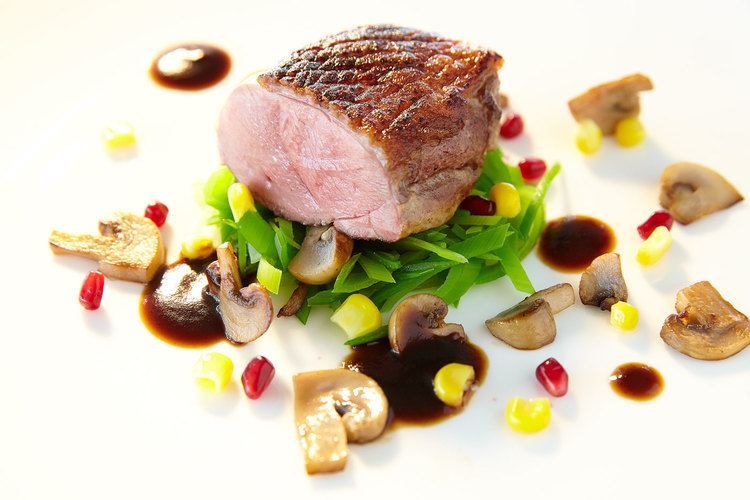 | ||
Haute cuisine 2013 official trailer
Haute cuisine (French: literally "high cooking", [ot kɥi.zin]) or Grande cuisine refers to the cuisine of "high level" establishments, gourmet restaurants and luxury hotels. Haute cuisine is characterized by meticulous preparation and careful presentation of food, at a high price level, perhaps accompanied by expensive wines.
Contents
- Haute cuisine 2013 official trailer
- Turning a mcdonald s big mac into haute cuisine
- Early history
- Cuisine Classique
- Nouvelle Cuisine
- References
Turning a mcdonald s big mac into haute cuisine
Early history

Haute cuisine developed out of political and social changes in France. The "high" cuisine represented a hierarchy in 17th century France as only the privileged could eat it. Haute cuisine distinguished itself from regular French cuisine by what was cooked and served such as foods like tongue and caviar, by serving foods such as fruit out of season, by making it difficult and time consuming to cook, and by using exotic ingredients not typically found in France.

In addition to who was eating Haute cuisine and what exactly it consisted of, the term can also be defined by the process it took to make and eat it. The French chefs behind the cuisine were educated and trained professionals in the kitchen, further building on the connection between wealth and status and Haute cuisine. In serving the dishes too, the theme of wealth and elitism is enforced. Haute cuisine was served at large social gatherings, something that only wealthy people of high status could hold and participate in. The foods at such gatherings were always presented with attention to detail and in a way that made them look extravagant.

Haute cuisine was characterized by French cuisine in elaborate preparations and presentations served in small and numerous courses that were produced by large and hierarchical staffs at the grand restaurants and hotels of Europe. The cuisine was very rich and opulent with decadent sauces made out of butter, cream, and flour, the basis for many typical French sauces that are still used today. The 17th century chef and writer La Varenne marked a change from cookery known in the Middle Ages, to somewhat lighter dishes, and more modest presentations. In the following century, Antonin Carême, also published works on cooking, and although many of his preparations today seem extravagant, he simplified and codified an earlier and even more complex cuisine.
Cuisine Classique

Georges Auguste Escoffier is a central figure in the modernisation of haute cuisine as of about 1900, which became known as cuisine classique. These were simplifications and refinements of the early work of Carême, Jules Gouffé and Urbain Dubois. It was practised in the grand restaurants and hotels of Europe and elsewhere for much of the 20th century. The major developments were to replace service à la française (serving all dishes at once) with service à la russe (serving meals in courses) and to develop a system of cookery, based on Escoffier's Le Guide Culinaire, which formalized the preparation of sauces and dishes. In its time, it was considered the pinnacle of haute cuisine, and was a style distinct from cuisine bourgeoise (cuisine for families with cooks), the working-class cuisine of bistros and homes, and cuisines of the French provinces.
Nouvelle Cuisine

The 1960s were marked by the appearance of nouvelle cuisine, as chefs rebelled from Escoffier's "orthodoxy" and complexity. Although the term nouvelle cuisine had been used in the past, the modern usage can be attributed to authors André Gayot, Henri Gault, and Christian Millau, who used nouvelle cuisine to describe the cooking of Paul Bocuse, Alain Chapel, Jean and Pierre Troisgros, Michel Guérard, Roger Vergé and Raymond Oliver, many of whom were once students of Fernand Point.
In general, nouvelle cuisine puts an emphasis on natural flavours, so the freshest possible ingredients are used, preparation is simplified, heavy sauces are less common, as are strong marinades for meat, and cooking times are often reduced. Nouvelle cuisine was a movement towards conceptualism and minimalism and was a direct juxtaposition to earlier haute cuisine styles of cooking, which were much more extravagant. While menus were increasingly short, dishes used more inventive pairings and relied on inspiration from regional dishes.
Within 20 years, however, chefs began returning to the earlier style of haute cuisine, although many of the new techniques remained.
